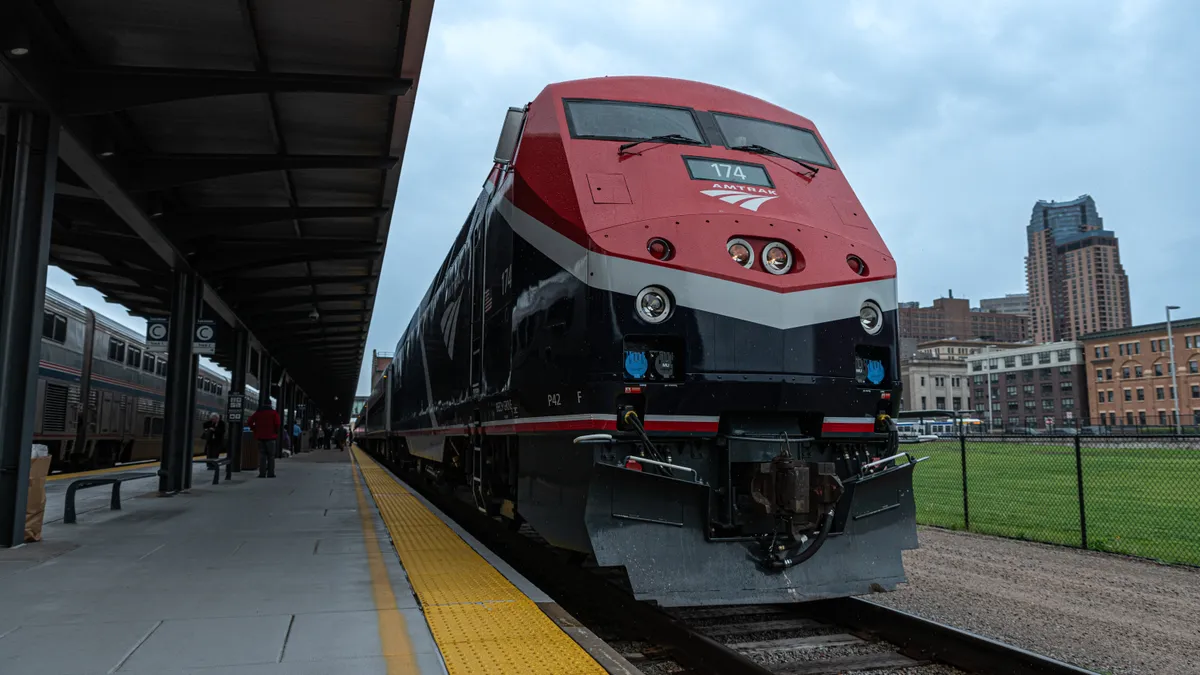Editor's Note: The following is a guest post from George Mulhern, CEO of Cradlepoint.
Public transit may very well be facing both the biggest barriers and greatest opportunities to evolve in the industry's history. At the center of it all? Connectivity.
Like many industries, mass transit has sustained significant blows during the COVID-19 pandemic. Widespread shutdowns proved extremely problematic as fare-based revenue has languished, reopening dates have been debated and rider and driver safety have remained under the microscope. Thankfully, we're also living in a time of great innovation that is poised to make critical services, such as public transportation, more efficient, beneficial and forward-thinking than ever before.
Some have questioned if the transit industry is capable of rebounding, while others have posited that perhaps it doesn't really matter either way. This latter opinion fails to properly recognize the importance of public transportation. For millions of people, including essential workers in critical industries, mass transit remains the best or even only option for consistent travel to and from work, stores and other vital places of everyday life.
The bottom line: We can't allow public transit to falter. It is too important to our communities.
Yes, the barriers to recovery are a bit daunting. However, sizable challenges always bring great opportunities, too. As public transportation restarts, many are embracing innovative, internet-connected technologies and applications more vigorously than before. Why? Because the ability to retain riders and draw in new ones; make life easier and more enjoyable for passengers; and support public health transit authorities might very well require new ways of doing things. The time to act is now.
There are several ways that technology can help bring passengers back to public transit for the long term, including contactless payment systems, passenger counters to help ensure social distancing, guest Wi-Fi, digital signs that provide critical safety messages and apps that help riders track the status of each bus or train in real-time. From an operations perspective, tools such as traffic signal priority (TSP) systems, on-board video surveillance and automatic vehicle location (AVL) platforms are becoming essential for improving efficiency amid strict budgets. And digital signs can be used to show advertising, thus creating new revenue streams.
The technologies that are driving the new normal for public transit depend on network connectivity that stays up all the time, which is difficult to guarantee inside metro buses, commuter trains, trolleys and ferries that are constantly moving throughout a large region. Difficult, but not impossible.
Amid the suddenly expedited digital transformation of public transportation, agencies should explore several key questions about their wireless connections in these vehicles:
How many of our technologies and applications require real-time access to data? Public transit tools such as TSP, AVL platforms and customer apps for tracking bus locations require a never-failing flow of data to the cloud. Without reliable LTE connectivity, these tools are ineffective.
How often does our LTE connection falter? If you have on-board network connections, you understand that a cellular operator will provide exceptional coverage in many areas but less-than-ideal reception in some others. Many transportation organizations find that using a router supporting two cellular carriers and two modems simultaneously is the best way to ensure constant network availability along every route.
Should our vehicles have both LTE and Wi-Fi? In many transit vehicles today, there's a need to not only send key data via LTE to the cloud, but also to provide Wi-Fi for passengers. Accomplishing both through one network solution is the best practice.
How secure is our data? Many mass transit groups need to send sensitive information to the cloud from their vehicles — including farebox data. Others are offering Wi-Fi and must think about which websites they are willing to let their riders access. It's best to implement infrastructure that accommodates a full range of network security options.
How much more can we do with our current on-board infrastructure? If your in-vehicle networking solution doesn't have the power to support high-bandwidth applications or the flexibility to use emerging cellular technologies such as Gigabit-Class LTE, it will be difficult to keep up with industry trends without constantly upgrading infrastructure.
How are technologies efficiently managed? Today, IT teams are tasked with monitoring network connectivity and security configurations while fleet managers are responsible for telemetry data that can drive business decisions. With dozens or even hundreds of vehicles traveling all over the map, network management often can't be done in person. Agencies require the ability to easily monitor their technologies and quickly make adjustments at a moment's notice.
What else can we do to support our community? One of our favorite recent public transit stories is out of northern California. When services halted and connected buses sat idle in the beginning of the COVID-19 pandemic, the Sacramento Regional Transit (SacRT) District asked itself an important question: “What can we do to help our community?”
The agency identified local "digital deserts” where many people lack internet access. SacRT began parking its mass transit vehicles at schools, libraries, parks and neighborhoods — providing Wi-Fi for children doing schoolwork, job-seekers sending applications and residents filing unemployment claims and filling out census forms. The agency also provided transportation and Wi-Fi for groups delivering meals to senior citizens.
With creative thinking like this, and with intelligently managed, constantly connected technologies, public transit can come back better than ever — with room to grow and improve services for many years to come.



















